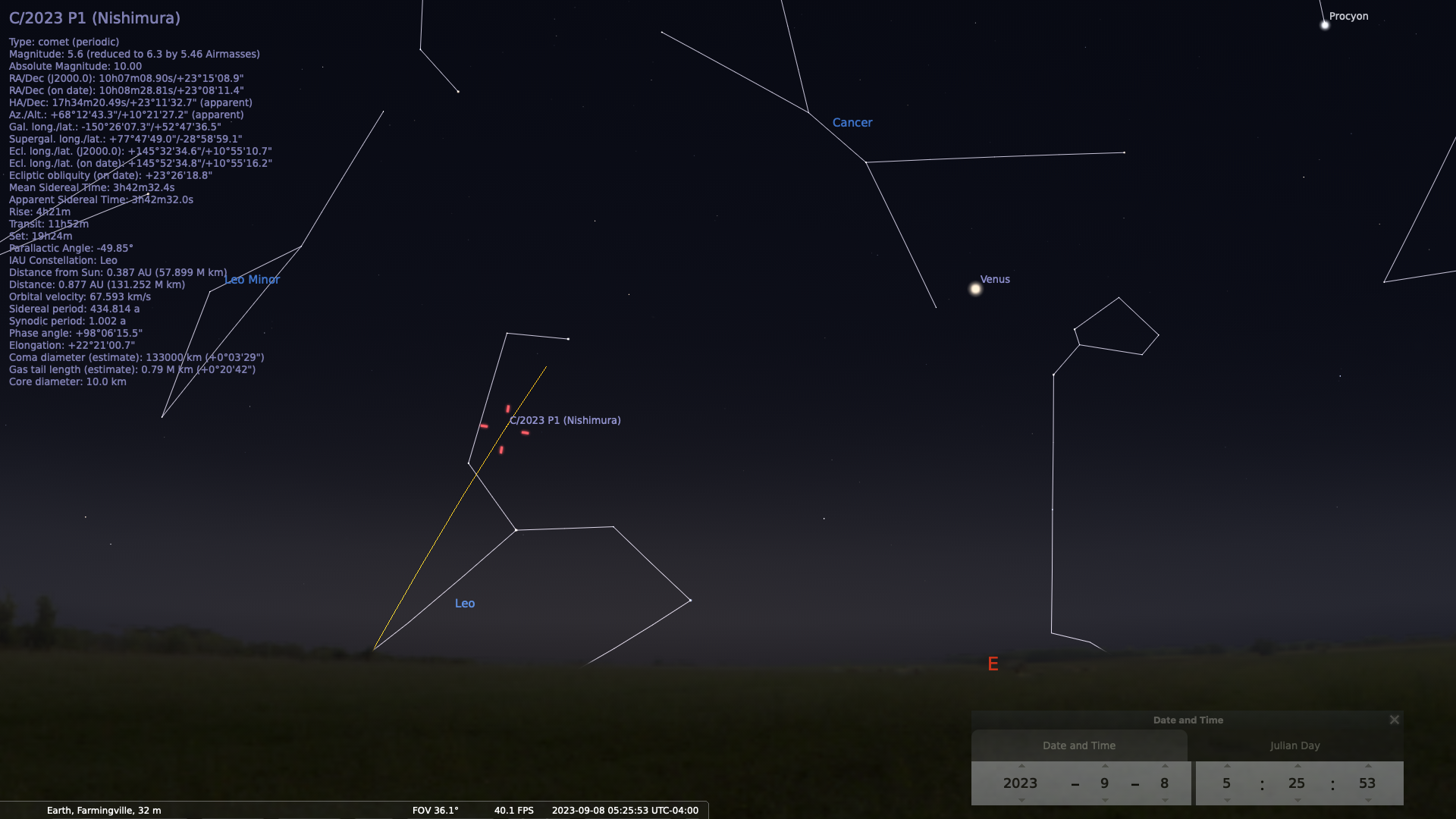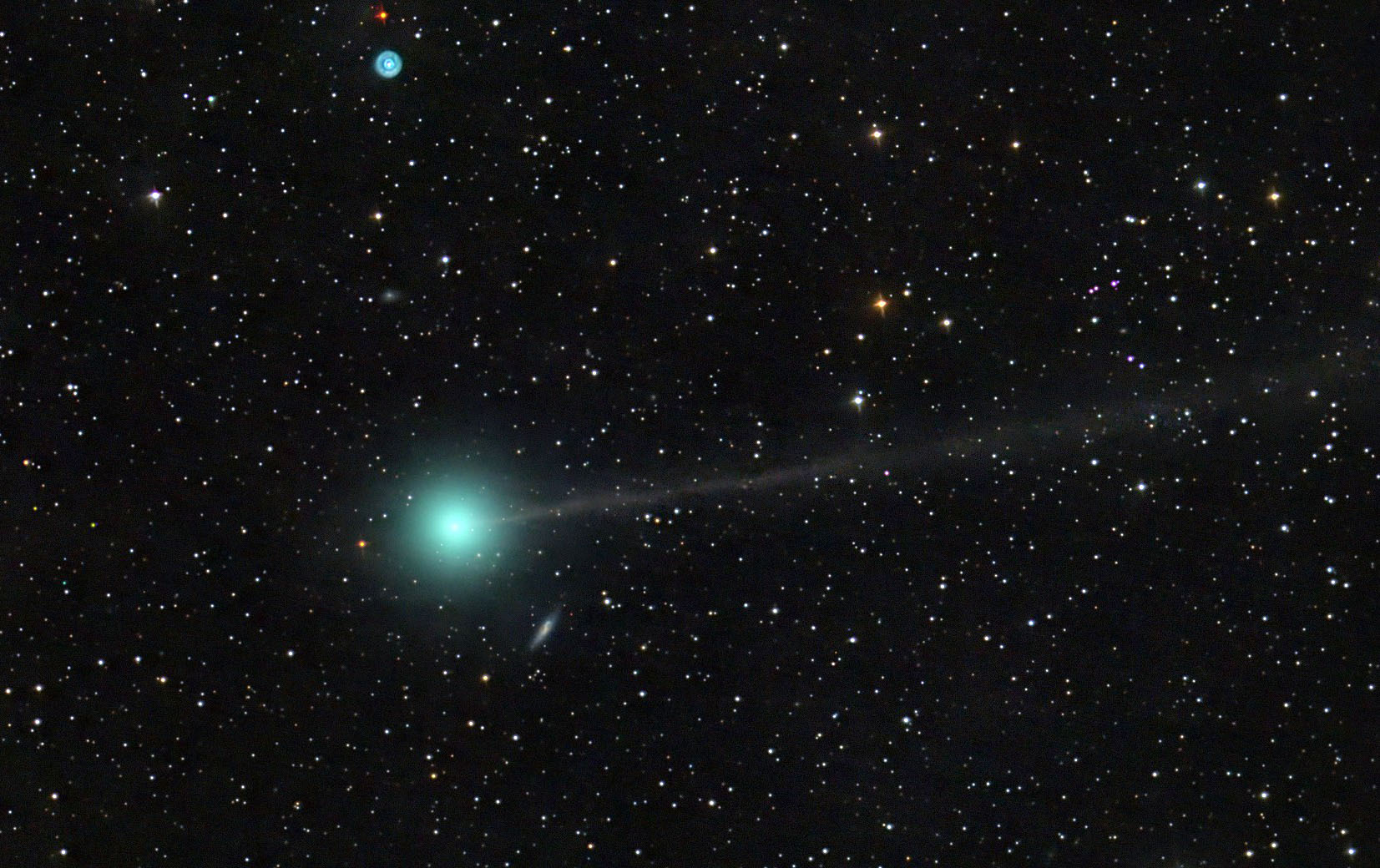Comet Nishimura will be at its closest approach to the sun this weekend and thus affords us a rare opportunity to observe it at its brightest!
Discovered on August 12 of this year by Hideo Nishimura, the comet originated in the Oort Cloud, a spherical shell of ancient debris, rock and ice left over from the solar system’s formation. Named in honor of Jan Oort, the famous Dutch astronomer who postulated (and later verified) its existence is at a minimum distance of 50,000 Astronomical Units (50,000 AU) from the sun. It is thus, well beyond the limits of our solar system and the Kuiper Belt, the region just beyond the orbits of Neptune and Pluto.
The comet’s Astronomical designation is C/2023 P1, identifying it as a long-period comet, discovered in the first half of August of this year. With a semi-major axis of 57 AU, 17 AU beyond the orbit of Pluto, the comet’s orbital period is 434 years. Over the next week, as it rounds the sun at its perigee, it will be at maximum brightness. It will then head back out, passing the inner planets, dimming as it goes, receding from visibility. For comparison, the orbital period of Halley’s comet is 76 years with a semi-major axis of 18 AU, or within the orbit of Uranus at 20 AU.
Why are comets the brightest near the sun?
As a comet approaches the sun, the energy received increases, causing the water, carbon dioxide and nitrogen ice to thaw and stream away in the opposite direction, energized by the sunlight.
To view the comet, you’ll have to rise early as it’s tracking through Leo in the early hours over this weekend and into next week. A pair of binoculars would be the best way to take in the comet with its beautiful green tail.
Designated image: Set against the backdrop of a distant galaxy is long-period comet Nishimura. Image credit: Dan Bartlett for NASA, August 19, 2023.
Additional resources and related content
https://spaceweathergallery2.com/index.php?title=comet
Photos of Comet Nishimura from around the world
A quick, interactive web-based version of Stellarium is available here Tonight's Sky. When you launch the application, it defaults to north-facing and your location (on mobile and desktop).
Astronomy For Change: https://astronomyforchange.org
Did you enjoy this article or like what we do? Why not leave a tip or buy us a Coffee?
Follow Us On Twitter: https://twitter.com/astronomychange
Why not support us on Patreon: https://www.patreon.com/astronomyforchange
Imagination is more important than knowledge
![]()
An index of all articles can be found here.
If you enjoyed this article, please consider supporting us with a modest donation
or through a subscription on our Patreon Page
Membership at Astronomy for Change is Free!






